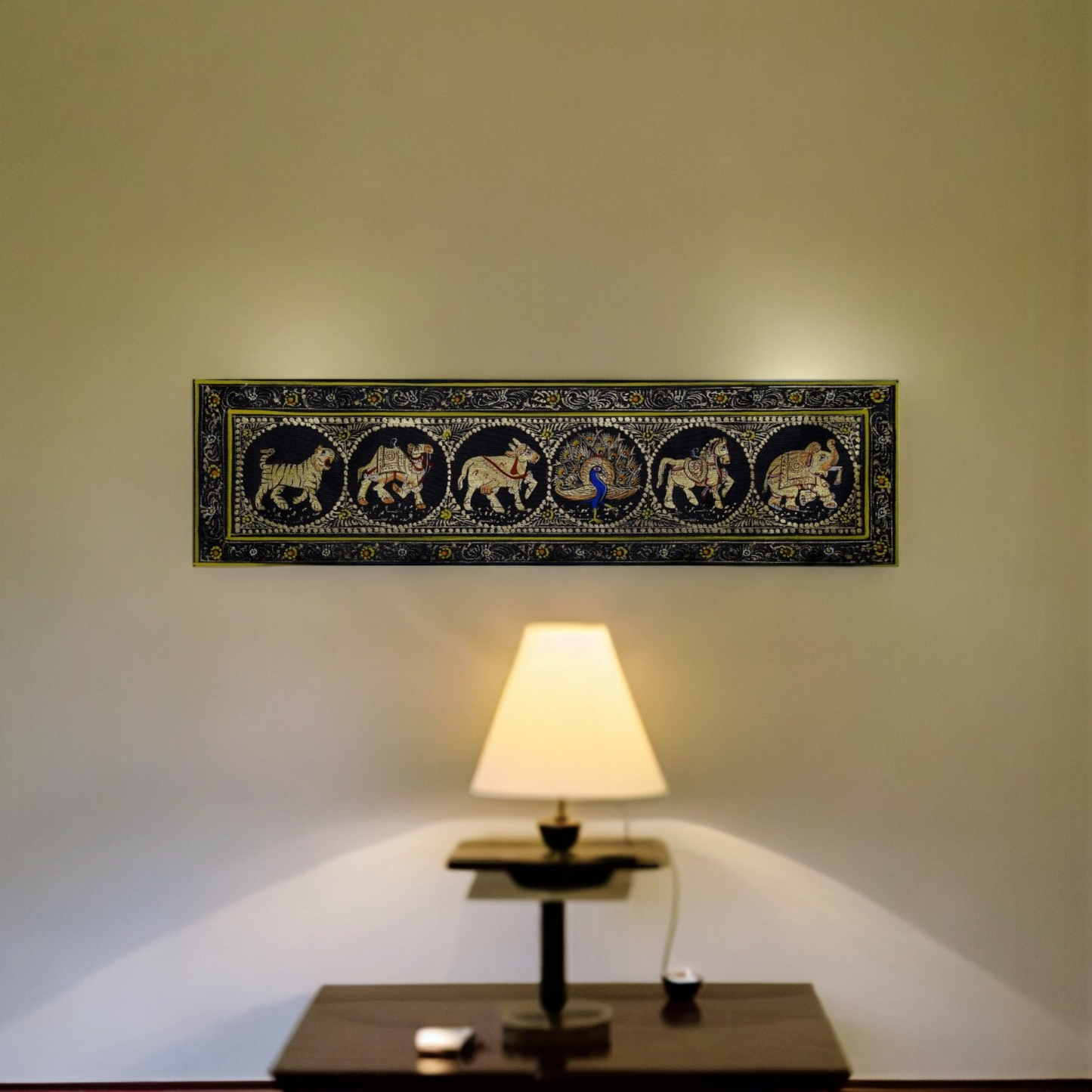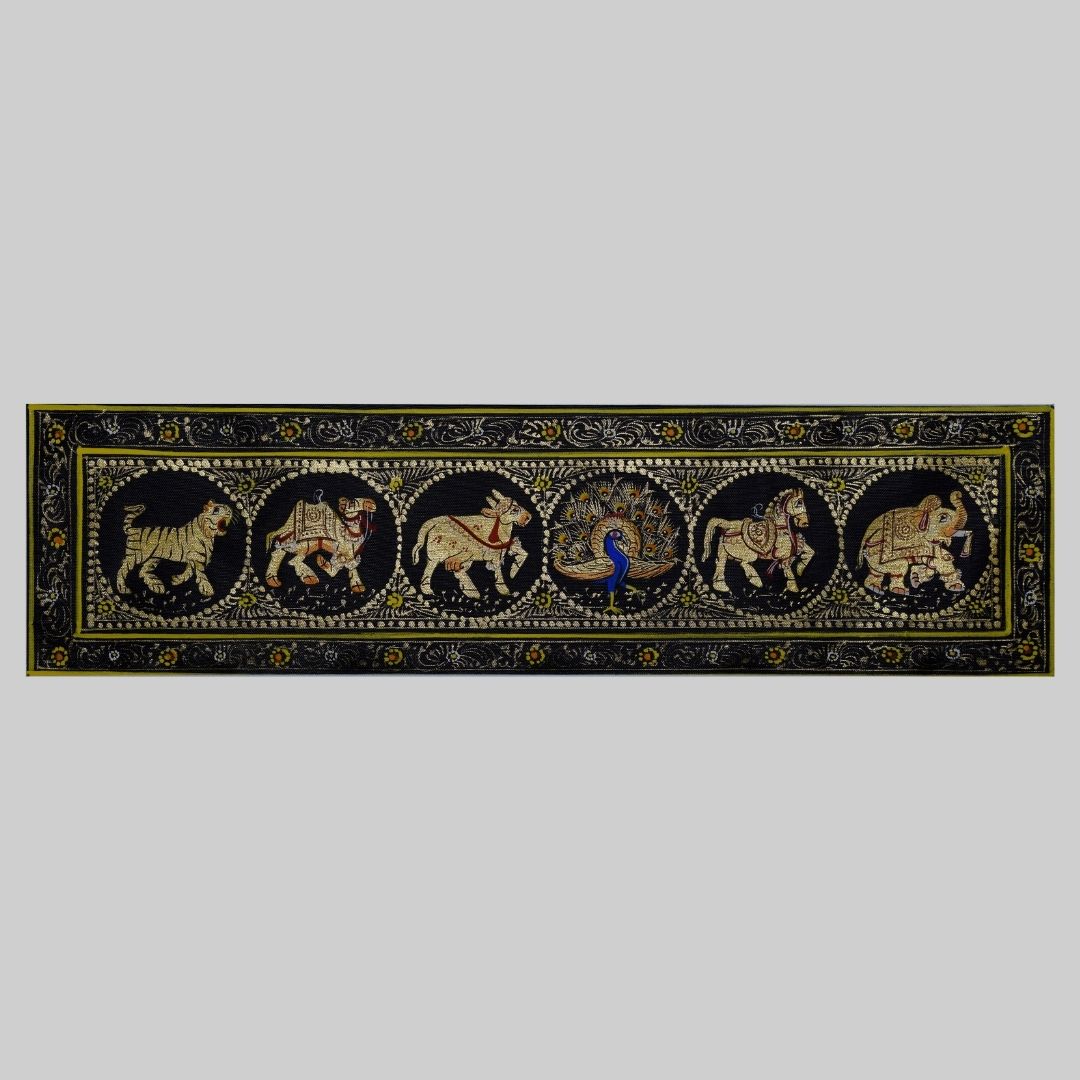Rajasthani Miniature Painting Of Elephant Horse Tiger Peacock Cow And Camel 108
Rajasthani Miniature Painting Of Elephant Horse Tiger Peacock Cow And Camel 108
SKU:
Couldn't load pickup availability
Share
Care & Instruction
Care & Instruction
Care & Instructions:
- Keep away from direct sunlight
- Can be safely dusted using a clean, soft natural artists brush.
- Do not use moist dust cloths, stiff bristle brushes, or feather dusters to clean the painting.
- Avoid spraying any fresheners, polish etc directly onto the painting.
Features
Features
Dimensions:
- H-4 W-8 inches
Product Material: Natural stone pigment on cotton.
Shipping & Delivery Details
Shipping & Delivery Details
DELIVERY INFORMATION
SHIPPING TIME
- The product will be dispatched in 2-4 weeks.
RETURNS
- Made to order items cannot be returned or exchanged
- Returns accepted within 3 days of delivery in case of damaged goods
Disclaimer
Disclaimer
- Each artwork is hand-painted and unique, so colors and details may vary slightly from the images shown.
- Each painting is handmade by a house of skilled artists. No two pieces are identical, which only adds to its originality and allure.


Miniature Paintings
Gracious strokes artfully done with a single haired brush, marks the detailing in the renowned Miniature paintings. The genesis of the Mughal miniature painting is said to be one of the pivotal points of visual history of India. An extravagant and striking fusion of the Indian style, whose roots that go back to the 6th and 7th Centuries BCE, and the Safavid style of the Persian school gave birth to the Mughal School of miniature painting. Under the patronage of Mughal emperors like Akbar and Jahangir, miniature art became the primary mode of historical archiving. The visual splendour of courtly scenes, historic wars, secret trysts of lovers, tales from mythology, and much more were captured in detail by the many schools of miniature painting throughout India. An intricacy so fine that the painting cannot be viewed alone with naked eyes and needs magnifying glass to view the details. The vibrancy of the paintings were brought out by natural colours from indigo, precious stones, shells, pearls, real gold and silver. Towards the end of the 18th century, Mughal miniatures started losing their sheen with the loss of genuine patrons for the delicate artform. Yet, till date the schools of miniature painting continue to pass the traditional skills on, with Rajasthan holding on strongly to the artistic legacy of the Mughal miniature paintings.


